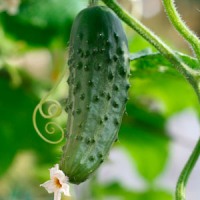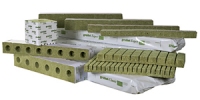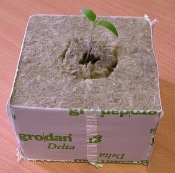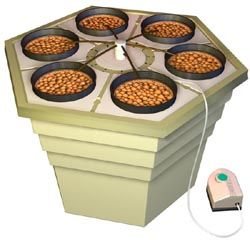The Urban Farmer, Issue #019
December, 2009:
Rockwool * Eco Grower * Hydro Window Farms, an Urban Solution

A woman’s garden is growing beautifully but the darn tomatoes won’t ripen.
There’s a limit to the number of uses for green tomatoes and she’s getting tired
of it.
So she goes to her neighbor and says, “Your tomatoes are ripe, mine are green.
What can I do about it?” Her neighbor replies, “Well, it may sound absurd but
here’s
what to do. After dark go into your garden and take all your clothes off.
Tomatoes can see in the dark and they’ll be embarrassed and blush. In the
morning they’ll all be
red, you’ll see.” Well, what the heck? She does it. The next day her neighbor
asks how it worked. “So-so,” she answers, “The tomatoes are still green, but
the cucumbers are all four inches longer.”


USING ROCKWOOL GROWING MEDIUM
Rockwool is a very popular hydroponic growing medium. It was originally called
“Mineral Insulation” and was used as building insulation. It was developed for
gardening in Denmark and is used extensively around the world for “Drip-Style”
hydroponic systems.
Rockwool comes in various shapes and sizes, which vary from 1″x1″x1″ starter
cubes up to 3″x12″x36″ slabs, with many sizes in between, which makes
Rockwool
one of the most versatile growing mediums.
The advantages to Rockwool are many, however there are several disadvantages as
well. Consider the pros and cons below before choosing this medium.
ADVANTAGES:
- Holds water: Rockwool holds an incredible amount of
water, which gives you a “buffer” against power outages or pump failure.
- Holds air: The consistency allows plenty of air,
which supplies the root zone with plenty of oxygen. It’s practically
impossible to over-water Rockwool.
- Variety: From 1″ cubes to 3″x12″x36″ slabs capable
of holding the root systems of huge plants, Rockwool comes in dozens of
shapes and sizes making it a versatile growing medium. It also comes “loose”
so you can fill pots or containers of any size.
- Neat and clean: Rockwool holds together very well
so it can’t spill. It’s easy to handle and does not leave a residue like
soil does.
DISADVANTAGES:
- Not environmentally sound: Rockwool is hard to
dispose of; like Styrofoam, it does not break down.
- Health concerns: The fibers and dust from Rockwool
are bad for your lungs. Wear a dust mask when handling to prevent problems.
- pH PROBLEMS – Rockwool has a high pH, which means
you have to keep a careful eye on your nutrient solution and keep the ph in
the proper range, which is 5.5-6.5 (6.0 is ideal).
- Long pre-soak period – Rockwool must be pre-soaked
for 24 hours before use, which other growing media do not require.
USING ROCKWOOL:
- Before you use Rockwool, first soak it for 24 hours
in water adjusted to a pH of 4.5 to 5.0. Use a clean bucket, just put the
cubes in the water and let them float around.
- To soak large Rockwool slabs, cut a hole in the top
of the plastic overwrap packaging and pour in pH adjusted water until the
slab is totally saturated. Let soak for 24 hours, then cut drainage slits in
the bottom. Remove the plastic before use.
- Using Cubes:
Rockwool cubes come in many different sizes. There are two sizes of “starter
cubes” that are designed for propagation. The 1″ x 1″ x 1 1/2″ and the 2″ x
2″ x 1 1/2″ cubes are not wrapped in plastic and are normally used for
starting seeds. The 1 1/2″ x 1 1/2″ x 1 1/2″ cubes are wrapped on four sides
with plastic to slow evaporation and are used primarily for taking cuttings.
The 3″ and 4″ cubes can be used as the primary growing medium or in
conjunction with other growing mediums. For small plants, one of these
larger cubes may be all the growing medium that you need. For larger plants
these cubes are used as an intermediate medium that gets transplanted into a
different type of growing medium as the plants grow.
The larger cubes come with or without a hole that is designed to hold the 1″
cube. With the hole you can easily transplant the 1″ starter cube directly
into the larger cube simply by inserting it into the hole.
- Slabs come in 6, 8, 10 and 12 inch widths, all are
3 inches deep and 36 inches long. The 6″ and the 8″ are by far the most
popular sizes and are large enough to grow just about anything. Most people
start their plants in Rockwool cubes (see above) and then transplant them to
the slab.

ECO GROWER – A Top Drip Hydroponic System
Eco Garden is a great introduction to hydroponics, and is especially suited to a
display of specimen plants (see photo). The Eco Grower incorporates an air
driven spider drip system and uses a hexagonal reservoir with removable 6 inch
lid inserts. Each lid insert will accommodate one net pot that can easily grow
very large plants.
Setup includes: 17-gallon reservoir, spider drip assembly,
pumping column, insert lid, six inserts, net cups, CocoTek liners, Elite 800
pump, 1/4in air line, Hydroton, & Flora nutrients. For more info, click here:
Eco Grower Drip Hydroponic System . .
URBAN SOLUTIONS
Looking at how to transform water bottles and window space into a functional
garden, this video interviews NYC artists Britta Riley and Rebecca Bray about their
hydroponic project called Window Farms. We check out their installation at
Eyebeam where they walk us through their beautifully simple urban gardening
solution.
Watch this cool video: http://www.youtube.com/watch?v=2fPZWJggyXY&feature=player_embedded
more at: http://windowfarms.org/
Stressed out lately?
Off Topic but Interesting: Stressed out? Check out this
excellent (& free)
7-step Plan to Stress Management & Saner Living.
We hope you have enjoyed this issue of The Urban Farmer Ezine. Each month, we will bring you another inspiring photo, gardening quote or idea, plus fresh new hydroponics news, techniques & products.
Insiders tips to get you growing…

~Stella and Simon from Hydroponics-Simplified.
|


Reply